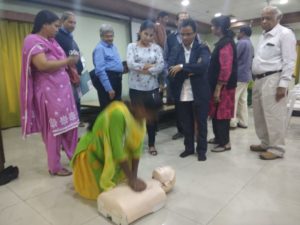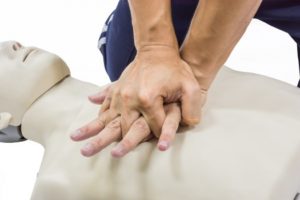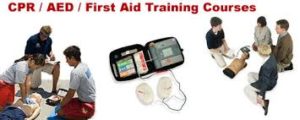CPR stands for Cardiopulmonary Resuscitation.
It’s a life saving medical procedure which is given to someone who is in cardiac arrest. It helps to pump blood around the person’s body when their heart can’t.

CPR Training in IMA Pune
It is a technique of basic life support (BLS) for oxygenating the brain and heart until appropriate definitive medical treatment can restore normal heart and ventilatory function.
What is a cardiac arrest?
A cardiac arrest is caused by an electrical problem in the heart. This electrical problem causes the heart to stop pumping blood around the body and to the brain.

- More than 3,50,000 cardiac arrests occur outside the hospital each year.
- In 2015, any-mention sudden cardiac arrest mortality in the US was 366,807.
- CPR, especially if administered immediately after cardiac arrest, can double or triple a person’s chance of survival. About 90 percent of people who experience an out-of-hospital cardiac arrest die due to non as availability of CPR .
- Cardiac arrest is the leading cause of death in the world.
- Cardiac Arrest Not So Sudden, New Study Reveals
- According to the study presented by Hillcrest Hospital, half of the men in the study presented symptoms of cardiac arrest up to one month prior to suffering the event, which stopped their hearts suddenly!!
- More than 280,000 people suffer cardiac arrest each year, with 80 percent of those cases occurring outside the hospital.
- As a result, survival rates are very low – less than 10 percent, according to the American Heart Association. If more people are aware of symptoms earlier, more lives could be saved.
- Research shows that Basic Life Support (BLS) can increase the rate of survival for certain victims of cardiac arrest.
- The American Heart Association recommends that everyone — untrained bystanders and medical personnel alike — begin CPR with chest compressions.
- It’s far better to do something than to do nothing at all if you’re fearful that your knowledge or abilities aren’t 100 percent complete.
Remember, the difference between your doing something and doing nothing could be someone’s life.
Here’s advice from the American Heart Association:
Untrained. If you’re not trained in CPR, then provide hands-only CPR. That means uninterrupted chest compressions of 100 to 120 a minute until paramedics arrive. You don’t need to try rescue breathing.
Trained and ready to go. If you’re well-trained and confident in your ability, check to see if there is a pulse and breathing. If there is no breathing or a pulse within 10 seconds, begin chest compressions. Start CPR with 30 chest compressions before giving two rescue breaths.
Trained but rusty. If you’ve previously received CPR training but you’re not confident in your abilities, then just do chest compressions at a rate of 100 to 120 a minute.
The above advice applies to adults, children and infants needing CPR, but not newborns (infants up to 4 weeks old).
We offer CPR Training for Schools, Colleges, Society’s, Hospitals & Corporate etc.
 Contact:
Contact:
BKPMG Health Solutions
Dr. B. K. Trivedi -7767014157

